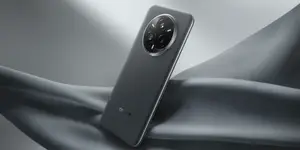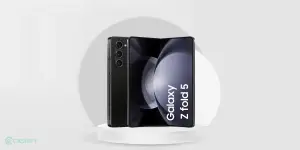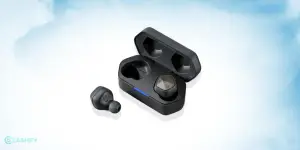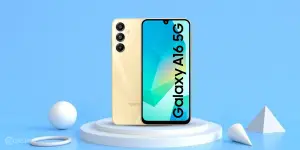Cashify is here to explain Refresh Rate. You may have noticed a recent influx of smartphones with higher refresh rates than usual. Now, you would have been okay with having the normal 60Hz refresh rate on your smartphone. Also, the majority of people still don’t know the difference between a 60Hz display and a higher one.
Most people are also unaware that there are displays with higher refresh rates. It is worth noting as well that these displays were limited to monitors by this time. With the advancement of technology, we are now seeing these displays on smartphones.
Also read: OnePlus 8 Leak Shows 120Hz Display
Also, this smartphone displays mean companies are clearly trying to upgrade you. No “urgency” or “need” exists to upgrade from a 60Hz to a higher refresh rate smartphone.
Having said that, having a higher refresh rate on your smartphone, monitor, or TV makes things run smoother. To understand how it improves performance, we must first understand what is it.
What is Refresh Rate?
First of all, it should be noted that our displays on smartphones, monitors, TVs and other appliances are not static.
This is also why we see movement on the panel rather than a static image. It’s worth noting that the display has a number of static images known as “frames” that are shown to you. These frames move at a speed that the human eye cannot detect, so we see them as moving video.
The rate at which these frames are changed or “refreshed” is known as the refresh rate. So, the higher the refresh rate will be, the smoother will the video or content playing on the display.
A few years back, we had a 60Hz refresh rate as default for all our smartphones including Android and iPhones. Smartphones now come with 90Hz and even 120Hz refresh rate displays, thanks to higher refresh rate displays. This year, even the new iPhones are touted to feature a high refresh rate display.
Also read: New Smartphone Launches
What is the difference between 60Hz, 90Hz and 120Hz refresh rate?
Now that you have understood what it is, we will tell you about the difference between the standard 60Hz panel, 90Hz panel and also a 120Hz refresh rate display.
The difference is basically the way in which these panels refresh content being played on them. For instance, the 60Hz refresh rate display got its name on its working mechanism. A 60Hz display refreshes its content 60 times per second or 60 frames per second. We can’t see the frames changing because we can only see 5 frames per second changing.
That was smooth, but wait until you hear that a 90Hz panel refreshes the content at 90 frames per second. A 120Hz panel, on the other hand, refreshes its content 120 times per second, making it look much smoother.
The difference in panels can be felt while scrolling through apps as well.
Basically, you need to understand that everything which requires a transition between one frame to the other such as switching between apps, scrolling through the app drawer, browsing the internet and even playing games will feel smoother on panels.
What are the downsides of having a higher refresh rate?
Since we have mentioned above that these display makes everything look smoother then you must be wondering why every smartphone does not come with a higher refresh rate panel than the current standard of 60Hz.
For starters, technology is still relatively new and expensive. Even the 120Hz panels we’re talking about were only available in LCD form until recently.
But engineers have now developed 120Hz refresh rate panels with AMOLED technology which means that it is perfect for flagship smartphones. This is also the reason why we have seen smartphones come out last year with a 90Hz AMOLED panel since the 120Hz was not available.
Also, these panels are known to kill your battery quicker. As we mentioned, the smartphone refreshes 90 times or 120 times per second which is much quicker than 60 times so it will take a toll on the battery as well.
Thus, companies were preferring the 90Hz refresh rate panel because it didn’t consume too much battery life compared to 60Hz panels and was noticeably smoother. Now that the 120Hz panels are available, it will be a different case and OEMs will have to increase battery capacity on phones which will make them thicker.
Should you upgrade to a higher refresh rate phone?
The question now lies whether you need to upgrade from your old 60Hz smartphone to a 90Hz or 120Hz rate phone. As we have mentioned earlier, there is no need for you to upgrade your phone since it won’t make your current smartphone slower or old in any way.
But if you are currently in the market for a new phone or your old phone is giving you trouble, you should upgrade to a smartphone with a higher refresh rate display for sure. The reason is that these smartphones are the future and you will see the industry transition from 60Hz panels to 120Hz panels in the next few years.
Also Read: Best Smartphones With A 90Hz Display
Also, the 120Hz rate technology will evolve over time and get cheaper which means even mid-range smartphones will get it. So if you don’t want to spend on a flagship right now to get such a display, you can wait for one or two years and it will come to mid-range phones.
Also Read: Best Smartphones With A 120Hz Refresh Rate Display
Update:
Best 60hz Phone – OnePlus 6T
The OnePus 6T comes with a slim design, a Qualcomm Snapdragon 845 chipset, 16 + 20 MP Dual Camera, Up to 10 GB RAM, a 6.4” Optic AMOLED display, In-Display Fingerprint sensor, operates on OxygenOS, has a 3700 mAh non-removable battery with a Fast Charging capability of 5V 4A and a capacity of 256 GB Storage. Perhaps the only thing that holds it back is the 60Hz rate that it offers. Comparatively, these are being made available on smartphones these days. Having said that, this is the best out of all the 60Hz mobile phones in the market.
Best 90hz Phone – Realme 6
This phone has a hole-punch display and 90Hz rate that delivers a smooth experience which is not common to the Realme models in this price bracket. It has a fingerprint scanner, a 20:9 aspect ratio 6.6-inch FHD+ 90Hz IPS LCD Display display, 4 GB RAM, a Realme UI with a lot of new features MediaTek Helio G90T SoC and an exceptionally good 4,300mAh battery capacity along with the 30W fast charger and a quad-camera setup of 64MP + 8MP + 2MP + 2MP . Being available at a reasonable price makes this device a worthy contender among the budget phones.
Best 120hz Phone – OnePlus 8 Pro
The OnePlus 8 Pro, renowned for its rate with a contoured Matte AG glass finish does not settle for anything less than the best. This is evident through features like the Qualcomm Snapdragon 865 chipset, a massive 4510 mAh battery support for 5G, a brilliant 6.78″ QHD+ display with 120 Hz refresh rate, seamless and detailed video that guarantee a smooth experience, backed by an IP68 rating, OxygenOS, Warp Charge 30 Wireless and a 48 MP Quad camera setup that lets you shoot like a pro, this mobile phone is probably the best out there.
















